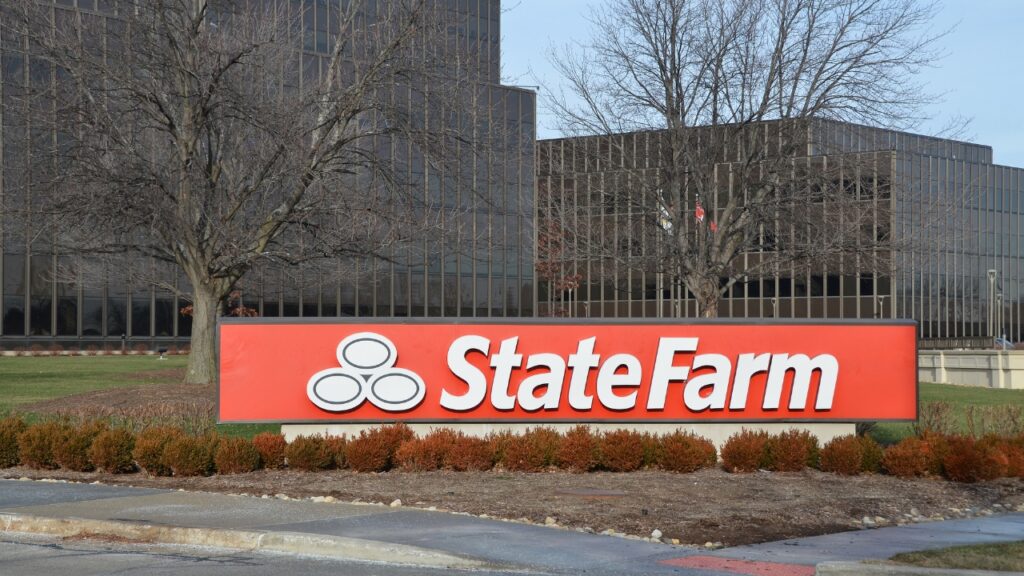California requires all drivers to have a minimum level of car insurance coverage. Beyond that, drivers can customize their policies based on their needs and budget.
When shopping for the best car insurance in California, it’s important to compare quotes from multiple insurers. Rates can vary dramatically between companies due to factors like your driving record, age, location, and more.
This article provides an overview of average costs, minimum requirements, top insurers, discounts, and laws related to car insurance in California. It aims to help drivers find the right balance of affordable coverage.
Contents
- Average Cost of Car Insurance In California
- Tips to Find the Best Car Insurance In California
- Minimum Car Insurance Requirements in California
- Best Car Insurance In California to Consider
- Best Car Insurance Companies In California
- Navigating Car Insurance Claims in California
- Car Insurance Discounts in California
- Factors Affecting the Car Insurance Rates In California
- Understanding California’s Car Insurance Laws
- Alternative Insurance in California
- Frequently Asked Questions
Average Cost of Car Insurance In California

According to 2024 data, the average annual cost of minimum coverage car insurance in California is $653. Drivers typically pay an average of $2,692 per year depending on age, location, driving history, and other factors.
Full coverage car insurance with liability, collision, and comprehensive coverage has an average yearly cost of $2,545 in California. Adding extras like rental reimbursement and roadside assistance can bring the yearly total over $3000.
The most expensive cities for car insurance in California are Los Angeles, San Francisco, San Jose, San Diego, and Sacramento. Rates in these urban areas may be two times higher than in rural parts of the state.
Teen drivers in California face steep rates, with an average annual cost of $6,238. Luckily, rates start dropping significantly as teens gain more experience and move into their 20s.
Tips to Find the Best Car Insurance In California

Follow these tips to find the best car insurance In California at the lowest price in California:
- Compare quotes from at least 5-6 insurers to find the best rates.
- Consider bundling home and auto insurance with the same provider for a multi-policy discount.
- Ask about discounts like good driver, defensive driver, good student, and more.
- Drop unnecessary coverage like rental car reimbursement or roadside assistance to save money.
- Raise your deductibles which reduces monthly premiums.
- Consider usage-based programs (pay-per-mile insurance) if you drive less than 10,000 miles per year.
- Check insurer ratings and reviews to find a reliable company.
- Re-shop insurance rates every 1-2 years or after any major life change.
Minimum Car Insurance Requirements in California
California law requires all drivers to carry:
- Bodily Injury Liability Coverage: $10,000 per person / $20,000 per accident minimum. Covers injuries to others when you’re at fault.
- Property Damage Liability Coverage: $3,000 minimum. Covers damage to another person’s vehicle and property.
- Uninsured/Underinsured Motorist Bodily Injury Coverage: $10,000 per person / $20,000 per accident minimum. Provides protection if you’re hit by an uninsured driver.
Drivers must show proof of insurance anytime a police officer requests it. The minimum fine for driving without insurance in California is $100 plus court fees, and your license will be suspended.
You may also like: Best Cheap Car Insurance in North Carolina
Best Car Insurance In California to Consider

Here are some top car insurance companies to consider for coverage in California along with pros and cons:
State Farm:
Pros:
- Largest auto insurer in California with extensive agent network
- Great choice for bundling home and auto insurance.
Cons:
- Rates may be higher for some demographics like teens and high-risk drivers.
GEICO:
Pros:
- Low rates with numerous discounts available
- Easy quote and claims process with mobile app.
Cons:
- Less personalized service compared to local agents.
Allstate:
Pros:
- Excellent financial strength ratings for claims-paying ability
- Offers accident forgiveness program.
Cons:
- Rates may be higher than some competitors for drivers with accidents.
Farmers Insurance:
Pros:
- Strong coverage options and discounts for teens and students
- Highly rated mobile app claims process.
Cons:
- Limited regional presence in California.
AAA:
Pros:
- Members can save up to 15% on rates
- Additional benefits like roadside assistance.
Cons:
- Insurance packages only for AAA members
- Limited to Western/Northern CA.
Mercury Insurance:
Pros:
- Competitive rates in California specifically
- Good choice for minimum liability coverage needs.
Cons:
- Fewer discounts than larger national companies
- Mixed customer satisfaction ratings.
Wawanesa Insurance:
Pros:
- Low rates for good drivers
- Online quote and policy management system.
Cons:
- Limited regional availability mainly in Northern California.
When comparing companies, get quotes from a mix of large national insurers and California-based regional insurers to find the best rate for your situation.
You may also like: Best Cheap Car Insurance in PA (Pennsylvania)
Best Car Insurance Companies In California

Here is an overview of the top car insurance companies in California based on market share, ratings, and customer satisfaction:
- State Farm is the largest auto insurer in California with 18% market share. They have an A++ financial strength rating from AM Best and score well for local agent support.
- Progressive has 11% market share in California. They are known for competitive rates and easy quoting and claims processes. Rated A+ by AM Best.
- GEICO holds 8.5% of the California market. GEICO offers low cost insurance tailored for military members and federal employees. Rated A++ financially.
- Allstate maintains 7.6% market share in the state. Allstate has high customer satisfaction ratings and an A+ AM Best rating. Good choice for accident forgiveness.
- Farmers Insurance has 6.5% market share in CA. Farmers offers robust coverage options, special packages for hybrid/electric vehicles, and plenty of discounts. Rated A by AM Best.
- Mercury Insurance is a California-based insurer with nearly 5% market share in the state. Mercury offers competitive rates but has faced some customer satisfaction complaints. Rated A by AM Best.
- AAA is another popular choice in California, with name recognition, quality service, and additional membership perks. Only available to AAA members and not statewide. Rated A by AM Best.

Steps to File a Claim
If you’re involved in an accident, follow these steps to file an insurance claim in California:
- Report the accident to law enforcement to get an official report if damage exceeds $1,000 or there are injuries/fatalities.
- Gather information including contact details for other involved parties, license plate numbers, and photos of damage and the accident scene.
- Contact your insurance provider as soon as possible to start your claim. Provide them details and the police report case number if applicable.
- Take your vehicle to an approved repair shop for an estimate. Your insurer will send an adjuster to inspect damages.
- For injuries, seek medical treatment right away and submit bills and records to your provider.
- Communicate with your claims adjuster throughout the process as your claim is investigated, settled, and closed.
You may also like: Best Cheap Car Insurance in Georgia
Dealing with Claim Disputes
Disputes may arise during the claims process if there is disagreement over fault, the value of damages, coverage limits, delays in processing, or denials. Here are some tips for dealing with claim disputes:
- Review your policy language closely to understand what is covered and any limits that apply.
- Provide as much documentation as possible to support your claim such as police reports, medical records, repair estimates, and eyewitness statements.
- Politely escalate your claim to a supervisor if communication with the adjuster hits a roadblock.
- Hire a public adjuster or appraiser if you cannot agree on the value of damages.
- File a complaint with the California Department of Insurance if you believe your claim is being handled unfairly or wrongly denied.
- Consult an insurance attorney if needed for guidance through the dispute resolution process.
Car Insurance Discounts in California

Taking advantage of discounts is a key way to lower car insurance premiums in California. Here are some common discounts available:
- Good driver discount: Up to 30% off for drivers with no accidents or violations in 5+ years.
- Defensive driver discount: Can save up to 10% for completing an approved safe driving course.
- Low mileage discount: Up to 15% off for driving under 7,500 miles annually.
- Good student discount: Applies to students maintaining a B or better average, saving up to 15%.
- Multi-policy discount: Save up to 20% for bundling home and auto insurance.
- Anti-theft discount: Up to 15-20% off for cars with anti-theft systems like alarms or VIN etching.
- Low income driver discount: Reduced rates for qualifying lower income CA drivers.
- Hybrid/electric vehicle discount: Saving for insuring non-gas vehicles, around 10% off.
Make sure to ask providers in California about all possible discounts to maximize your savings!
Factors Affecting the Car Insurance Rates In California
Insurance companies take many factors into account when setting car insurance rates in California. Understanding these factors can help drivers find the lowest prices.
Major factors that impact your rates include:
- Driving and credit history: Drivers with clean records save the most, while tickets, accidents, DUIs, and poor credit lead to higher rates.
- Age and experience: Teen drivers pay the most while middle-aged drivers pay the least. Rates drop with years of licensed driving experience.
- Location: Insurance costs more in high-risk congested urban areas than lower-risk rural areas. Your garaged address is a key factor.
- Type of vehicle: Sports cars, luxury vehicles, and large SUVs cost more to insure than family sedans and economy cars.
- Coverage limits and deductibles: Higher liability limits and lower deductibles mean higher premiums.
- Gender: Statistics show young male drivers typically pay more than females. The gap narrows with age.
- Miles driven annually: Drivers who put fewer miles on their car generally get lower rates.
You may also like: Cheapest Car Insurance In Michigan
Understanding California’s Car Insurance Laws

Mandatory Coverage Requirements
California law requires:
- $20,000 Bodily Injury Liability per person
- $30,000 Bodily Injury Liability per accident
- $3,000 Property Damage Liability
- $10,000/$20,000 Uninsured Motorist Bodily Injury
These state-minimum limits may be insufficient in the event of a serious accident. Many experts recommend 100/300/100 liability minimums.
Drivers who cannot provide proof of insurance at a traffic stop face fines up to $100 plus court fees for a first offense. Repeat offenses can lead to license suspension.
Optional Coverages for Additional Protection
Drivers looking for protection beyond the minimum requirements can add:
- Comprehensive and collision coverage: Pays to repair your vehicle from damage in non-collision events (like theft or vandalism) and collisions where you’re at fault. Subject to deductibles.
- Medical payments coverage: Additional protection for medical expenses incurred after an accident, regardless of fault.
- Gap insurance: Covers the “gap” between what your car is worth and what you still owe on your auto loan if your vehicle is totaled. Prevent owing extra money.
- Rental car reimbursement: Provides coverage for a rental car if your vehicle is being repaired after a covered claim.
- Roadside assistance coverage: Pays for help with lockouts, tire changes, jump starts, fuel delivery, and towing.
Alternative Insurance in California

Drivers who cannot get insurance from standard companies, such as high-risk drivers and those with poor driving records, do have options:
- California Assigned Risk Program: High-risk drivers can obtain basic liability coverage through the state’s auto insurance plan, although at higher rates.
- California Low Cost Auto Insurance: This program by the California Automobile Assigned Risk Plan provides reduced coverage for low-income drivers who qualify.
- Non-standard carriers: Insurers that specialize in high-risk coverage such as The General, National General, and Mercury offer policies for hard-to-insure drivers. Rates are expensive.
Usage-based programs: Pay-per-mile insurance charges drivers based on actual miles driven, which can save money for some motorists. Metro mile is a top option.
Rideshare coverage: Rideshare drivers need special insurance endorsements on personal policies. Companies like State Farm and Allstate now offer this extra protection.
Frequently Asked Questions
1. What is full coverage car insurance in California?
Full coverage insurance includes liability coverage that meets state minimums along with collision and comprehensive coverage which pay for damage to your own vehicle with deductibles. This protects you in most accident situations.
2. What is the cheapest car insurance in California?
The cheapest company on average is GEICO, but rates vary a lot by driver. Comparing quotes across insurers and looking for discounts maximizes chances of finding the lowest rate.
3. What car insurance is required in California?
California requires a minimum of $10,000 bodily injury liability per person, $20,000 bodily injury liability per accident, and $3,000 property damage liability. Uninsured motorist bodily injury coverage of $10,000/$20,000 is also mandatory.
4. How long do you have to report a car accident to your insurance in California?
California drivers must report an accident to their insurance provider within 7 days if there are any injuries involved. If there are no injuries, you generally have 15 days to report the incident.
5. How to get car insurance in California?
You can get quotes online, over the phone, or through local insurance agents in California. Compare rates from national and regional companies. Consider all discounts you may qualify for as a driver.
6. What happens if you don’t have car insurance in California?
It is illegal to drive uninsured in California. Getting caught may lead to fines of $100-$500 for a first offense, suspension of your license, and impoundment of your vehicle. You may also be personally liable for damages from any accident that occurs.

